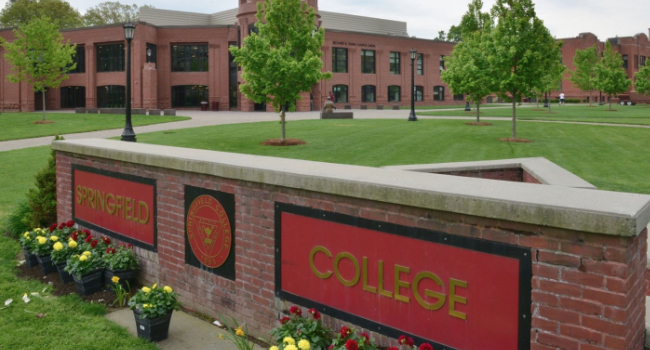
Springfield College Police Department Upgrades VMS for Improved Live Monitoring, Investigations
Springfield College is an independent, non-profit, coeducational institution founded in 1885. Approximately 4,100 students, including 2,500 full-time undergraduate students, study at its main campus in Springfield, Massachusetts, and at its regional campuses across the country. Known as the birthplace of basketball, Springfield College is where the sport was invented.
The Springfield College Police Department (a.k.a. Springfield College Public Safety) is a dedicated on-site service that strives to keep students, staff, visitors, buildings and grounds safe. Its team of 21 sworn police officers are fully trained, and are available 24 hours a day, seven days a week. They are bolstered by Community Service Officers (CSO’s) who also patrol the campus on foot, cycle, and cruiser, as well as respond to medical emergencies when needed.
The backbone of the department is its Dispatch Center, located on Portsmouth Street, where a six strong team respond to calls from the 26 blue light emergency phones located around the campus, as well as to 911 calls that are forwarded to the center. A network of 300 video surveillance cameras situated indoors and outdoors provides dispatchers and officers with visibility of the campus. These cameras enable the team to monitor areas and view situations in real-time to coordinate appropriate response. The camera system is managed and operated through a video management system (VMS).
The college has been a Qognify, part of Hexagon, customer for 15 years. Until recently it was operating the Ocularis video management system (VMS), which had proven to be a sturdy and reliable platform to manage its cameras, as well as ensuring video footage could be captured, stored, recalled and replayed by detectives, as part of their investigations and evidence gathering process.
However, with an eye on the future, Joseph P. Tiraboschi, the Chief of Police and Executive Director of Public Safety at the Springfield College Police Department, decided to upgrade the VMS as part of a wider long-term project to harness the advances in surveillance and security systems technology.
A review of the systems currently available on the market validated Springfield College’s decision to evolve its longstanding relationship with Qognify and upgrade to its next-generation enterprise-class VMS – Qognify VMS.
The process of switching to Qognify VMS is simple. Furthermore, organizations such as Springfield College that are migrating from Ocularis can take advantage of a powerful upgrade tool, which automates much of the transition process, transferring users, groups, permissions, and views from the existing system to Qognify VMS.
The video system is central to the Dispatch Center’s operations, whether using a live video feed to coordinate a response to a road traffic incident at an intersection or monitoring suspicious activity on-campus. Tiraboschi observes: “By upgrading from Ocularis to Qognify VMS we realized an instant improvement in the ability of our surveillance system to support day-to-day activities of our dispatchers, officers and CSO’s to be more effective in their police work.”
“It is quicker for us to share video footage with Springfield Police, the Massachusetts State Police and the District Attorney’s office,” explains Tiraboschi. “Files that previously took several hours to download can be available on a portable drive within 20 minutes.” What is more, since the upgrade to Qognify VMS the department has extended the period it stores video footage on its two locally hosted servers from 14 days to 21 days.
However, it isn’t only the speed of the download that has improved the evidence management process. He adds: “We can now synchronize footage across multiple cameras in one single high-quality video, so the District Attorney and court system have just one file to review, all the way through to trial.”
With Qognify VMS providing Springfield College with a futureproof system, the next phase of the project will see it taking advantage of new features within the system, as well as new improvements in camera technology. Tiraboschi adds: “We are looking at geo-locating our cameras on an interactive map, so that during an incident or investigation, we can quickly lasso an area and instantly be presented with the relevant footage from the cameras in the vicinity.” The college is also planning to upgrade to higher quality cameras, enabling it to operate and maintain fewer cameras, expand the areas being monitored, and take advantage of new intelligent analytics capabilities.
Tiraboschi concludes: “Qognify VMS makes all of our lives easier, when monitoring and responding to an active threat, as well as post incident investigation and evidence sharing.”